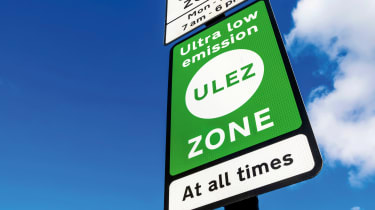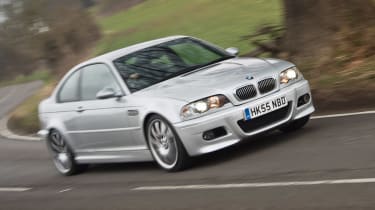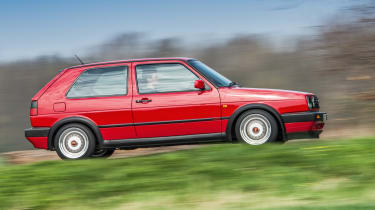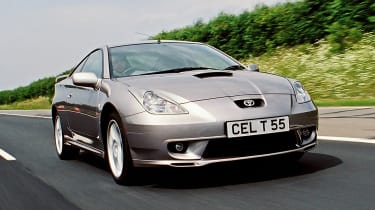ULEZ explained – all you need to know about Ultra Low Emission Zones
The expansion of Ultra Low Emission Zones poses an ever-increasing threat to the use of modern and future classic cars. Here’s why
They come in many shapes and forms and with a variety of names – Low Emissions Zones, Ultra Low Emissions Zones, Clean Air Zones – but what we can say with certainty is that they’re here to stay, and very likely expand and creep across the country. The best known is the London ULEZ, especially now it’s expanded to encompass a large part of London bordered by the North, and South, Circular roads, but these Clean Air Zones are also already in operation in other parts of the country, so even if you have no plans to visit London you should pay attention to what ULEZs might mean for you.
Essentially, the ULEZ was introduced to improve the quality of London’s air, which despite being the cleanest since records began (according to DEFRA, the Department for Environment, Food & Rural Affairs) could still do with some improvement. It’s the concentration of particulate matter that is being targeted which regularly exceeds World Health Organisation guidelines, and as a result Transport for London (TfL), along with other UK conurbations, is focussing on NOx (nitrous oxide) emissions for the clean air zones.
> Cat A, B, S, and N cars: insurance write-off categories explained
The ULEZ standard for passenger cars is Euro 4 (or equivalent) for petrol cars and Euro 6 (or equivalent) for diesels, and it’s important to remember that it’s only the vehicle’s NOx output that is being judged here, needing to emit less than 0.08g/km of NOx. While CO2 outputs are important in the wider global warming debate, they have no impact on whether a car will be ULEZ compliant or not. Drivers of cars failing to meet the required standard are subject to a daily charge of £12.50, and the zone operates 24 hours a day, seven days a week.
What cars are compliant and not
So which cars are and aren’t compliant? The diesel question is pretty simple – it’ll have to be a Euro 6 machine as virtually no Euro 5 diesels (or earlier) manage to emit less than 0.08g/km of NOx. With petrol-engined cars it’s a little more complex. Euro 4 cars started hitting the streets from January 2006, but there are plenty of pre-Euro 4 cars that meet the Euro 4 emissions standards. For example, you’ll find plenty of earlier E-class Mercedes that are OK, Lexus LS430s (but not the earlier LS400), petrol Audi A2s, late model Toyota Celicas… you get the idea.
There are plenty of Euro 3 (which came into force in January 2001) cars that easily pass Euro 4 NOx requirements, but no Euro 2 cars (roughly 1996/1997 on) fall into this category, mainly for the simple reason that for Euro 2 hydrocarbons and NOx were measured together so there’s no NOx level reading with which to judge a car. Generally speaking, cars featuring older technology are less likely to meet Euro 4 NOx levels – a 2001 E46 BMW 318i auto falls foul of the regulations, but a 330i from the same year is fine, thanks to having a more modern power unit than the older four-cylinder 318i.
There are plenty of seeming anomalies and it’s a bit of fun trying to guess which Euro 3 cars pass ULEZ standards, and which don’t. Using data from 2001 you’ll discover that an Aston Martin DB7 Vantage is fine to drive through London, but a 1.7-litre Ford Puma isn’t. Ferrari 360 Modena? Yes, that’s fine, but a 996 Porsche 911 Carrera 2 isn’t… unless it’s a Tiptronic, in which case it’s OK. A BMW E46 M3 is good to go, but its bigger sibling, the E39 M5, will have to pay the £12.50 charge. And speaking of charges, you’ll be hit by a £160 fine if you fail to pay the daily charge, reduced to £80 if you cough up within 14 days of the penalty notice.
While the majority of petrol-engined machinery from the 21st century will pass the ULEZ standard, it’s not such great news for cars from the 1980s and 1990s. Anything from the 1970s or older is fine as those with a historic VED rating are exempt from the ULEZ, and as the years go by the government’s rolling 40-year cut-off for historic qualification will mean that more cars will be free of ULEZ concerns.
But what about all those performance icons from the ’80s and ’90s? Cars such as the Mk2 Golf GTI, the W124 Mercedes 500E, any proper Audi Quattro, any E30 or E36 BMW (including the M3), the Mercedes 190 Cosworth, Porsche 928, Honda NSX, BMW 635CSi, Renault Clio Williams… again, you get the idea. TfL’s automatic number plate recognition cameras and databases see no difference between your immaculately maintained but non-compliant Mercedes 2.3 Cosworth and a knackered, smoke-belching 1992 Nissan Micra. Both get taxed £12.50 per day just the same.
And it looks like TfL will do very well out of the new, expanded ULEZ. It’s still a new set-up of course, but a month’s worth of data would suggest that TfL has so far done pretty well as far as revenue is concerned. During its first month of operation an average of 77,000 non-compliant cars were driven in the new ULEZ zone every day, and at £12.50 a pop that equates to getting on for a million quid a day.
Of course, if you run a post-’80 classic and live outside London you might believe you can sit back and ignore your car’s emissions. But ULEZ-style restrictions are springing up around the UK and the rest of Europe so quickly that the urbanaccessregulations.eu website – the online bible for Europe’s ultra-low emission zones – can barely keep up.
There are restrictions planned for Aberdeen, Bath, Birmingham, Brighton, Bristol, Dundee, Edinburgh, Glasgow, Leeds, Leicester, London, Norwich, Nottingham and Oxford, with plenty more to follow. And while many of these are targeting older, more polluting HGVs, taxis and buses, it’s not a huge stretch to see that once the camera infrastructure is in place it could be expanded to include passenger cars too. Cross the Channel and you can add Lyon, Lille, Clermont, Marseilles, Nice, Rouen, and the list goes on for pages, including a slew of cities in Italy, Germany, Ireland, Holland, Belgium, Spain, Bulgaria, Denmark, Finland...
It’s unlikely to stop there. It’s possible that the Euro 4 cut-off won’t last much longer, drawing even more cars into the net – Stockholm has just put in place a Euro 6 low-emission zone. Islington and Hackney have imposed a five-street zone that even bans early hybrids. And environmental groups are already gathering their ammunition against electric cars on the basis of road dust and particulate emissions from tyres and brakes. At the opposite end, those older, pre-’80s classics are under threat, too; Oxford City Council’s proposed zero emission zone will force classic car owners to apply for permits to enter the city.
The implications of ULEZ schemes extend far beyond simply restricting where and how often affected cars are driven – at their most serious they could threaten the very existence of some significant cars. The UK government’s current system that grants tax and MOT exemption for cars as they reach 40 years old, on a rolling basis, has seen a steady stream of newly fully fledged classics reaching the market each year, and the cars from the ’80s and onwards that are being targeted by ULEZ are the future of that scene. But if there’s no market – or a much reduced market – for buying, selling, driving and enjoying modern classics, more will end up in the crusher, leaving far fewer to make it to the safety of exempted classic status. After all, who’s going to want a car they can’t drive anywhere without being heavily taxed?
Clearly, the repercussions for people who earn their livelihood from classic cars – restorers, dealers, mechanics, etc – are huge. It’s too early to see a direct knock-on to modern classic values, but there’s certainly evidence that some buyers are backing away from the risk of young-timers being taxed off the roads. Jonathan Dawson, of Lincolnshire’s Horsepower Hangar, said: ‘We’ve already lost a sale on our Porsche 928 GTS thanks to the ULEZ. It’s really messing up the market.’
You can check vehicle compliance for London’s ULEZ at tfl.gov.uk.






